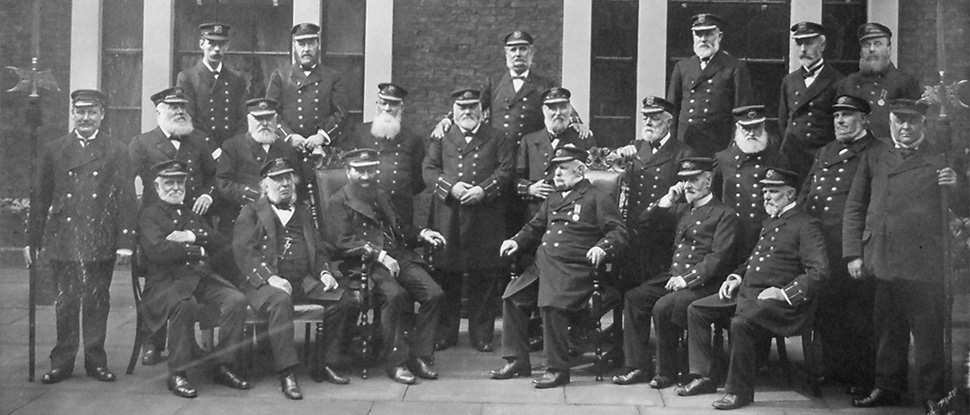In the Year 1169, during the reign of Henry II, when Holy Trinity Church was little more than a chapel of ease to the Mother Church at Hessle, the people of Wyke (HULL) used to look to the Carmelite Monks for spiritual guidance.
It was in this early period that some 27 parishioners from Holy Trinity Church banded together to offer each other assistance when required.
This arrangement lasted for some 200 years, before a proper Guild was formed and registered with the government of the day.
By 1299, the town became known as Kingstown upon Hull, and Edward the First granted a Charter to the town in 1299.
In 1350, Europe was ravaged by The Black Death. Many victims were buried in the open area in front of the present Holy Trinity Church, which used to be an open market.
In 1369, the area of the town was bounded by the Rivers Hull and Humber, on the West by what is now Prince’s Dock Side and Humber Dock Street, and Queens Gardens on the North side. There were five gates giving access to the walled town, and the Main Gate, Beverley gate, was located at the west end of what we now know as Whitefriargate, The remains of which have recently been excavated and have been preserved.
About 2000 people, headed by a Mayor, lived in this walled town and they had several places of worship, including the Holy Trinity Church and St. Mary’s Church.
Both the Black Friars (Dominican Monks) and the White Friars (Carmelite Monks) had houses in the town.
Goods were bought and sold in the market place and tolls had to be paid on the transactions to pay for the paving of the streets. There were a few alms houses looking after the poor and the sick, a Royal Mint and a Brickyard.
The Port, for sailing ships was at the mouth of the River Hull, where it flows into the Humber Estuary.
In 1369, 49 men and women formed themselves into a Guild, in honour of the Holy Trinity. Their names are recorded on the “First Subscription” dated June 4th 1369, together with the conditions of membership. They pledged themselves to be present in the Church of the Holy Trinity, in Hull, on the Day of the Holy Trinity, and to carry the Guild’s Candles, and they also bound themselves to help each other in poverty and sickness.
A Brother or Sister, not able to support himself or herself was to be paid eight pence a week, and at the Feast of St. Martin, to be given “ a tunic and a little cap.” If this was not sufficient, a collection was made among the members to give further support.
They also pledged themselves to attend the funeral, whenever a member died, and also to say Mass and to make offerings for the soul of the deceased. Four tapers were to be kept burning and thirty Masses said for the soul within the first week after burial. Two tapers were to be burnt if a member’s child died.
The Rules and Regulations of the Guild were contained in the document, which gave the membership subscription as being two shillings a year, to be paid at the four feasts of The Nativity, John the Baptist, St. Michael and Easter.
If any member was in arrears with his or her subscription, the amount to be paid was double whatever was owed.
For those members who showed rebellious behaviour, the fine was 2lbs of wax and there was also a penalty of 1lb of wax for any absences from church on the Day of the Holy Trinity, or for not attending funerals or for not saying Mass, unless they had reasonable cause for not complying with their obligations.
The Document is written in Latin and has 23 seals still attached. This Document formed the beginning of the Guild which later, under the Charter of Elizabeth I, in 1581, became to be known as “The Guild or Fraternity (Brotherhood) of Masters and pilots, Seamen of the Trinity House in Kingston –upon-Hull.
The Guild began as a charity, to care for the sick and poor of the community, with a religious background, and has continued along similar lines up to the present day.
The Charity was supported by subscriptions from the guild members. The House has occupied the present site since 1467, in the reign of Edward IV, and was enlarged in 1737, in the reign of George II, as indicated over the door of the main entrance.
The House has administered alms houses since 1457 and still does to this day, providing 64 rest homes for the needy seamen or their widows, and pays pensions to 700 persons who qualify for them.
The income for the support of the pensioners and Almshouses is derived from the Carmelite Estate. After the dissolution of the Monasteries between 1536 and 1541 the land occupied by the Carmelite Friars became Crown Land and was eventually purchased by Thomas Ferres and given to the Guild by him in 1621.
Trinity House also has the ownership of several farms within the East Riding of Yorkshire which also supports the Guild and the Charity.
